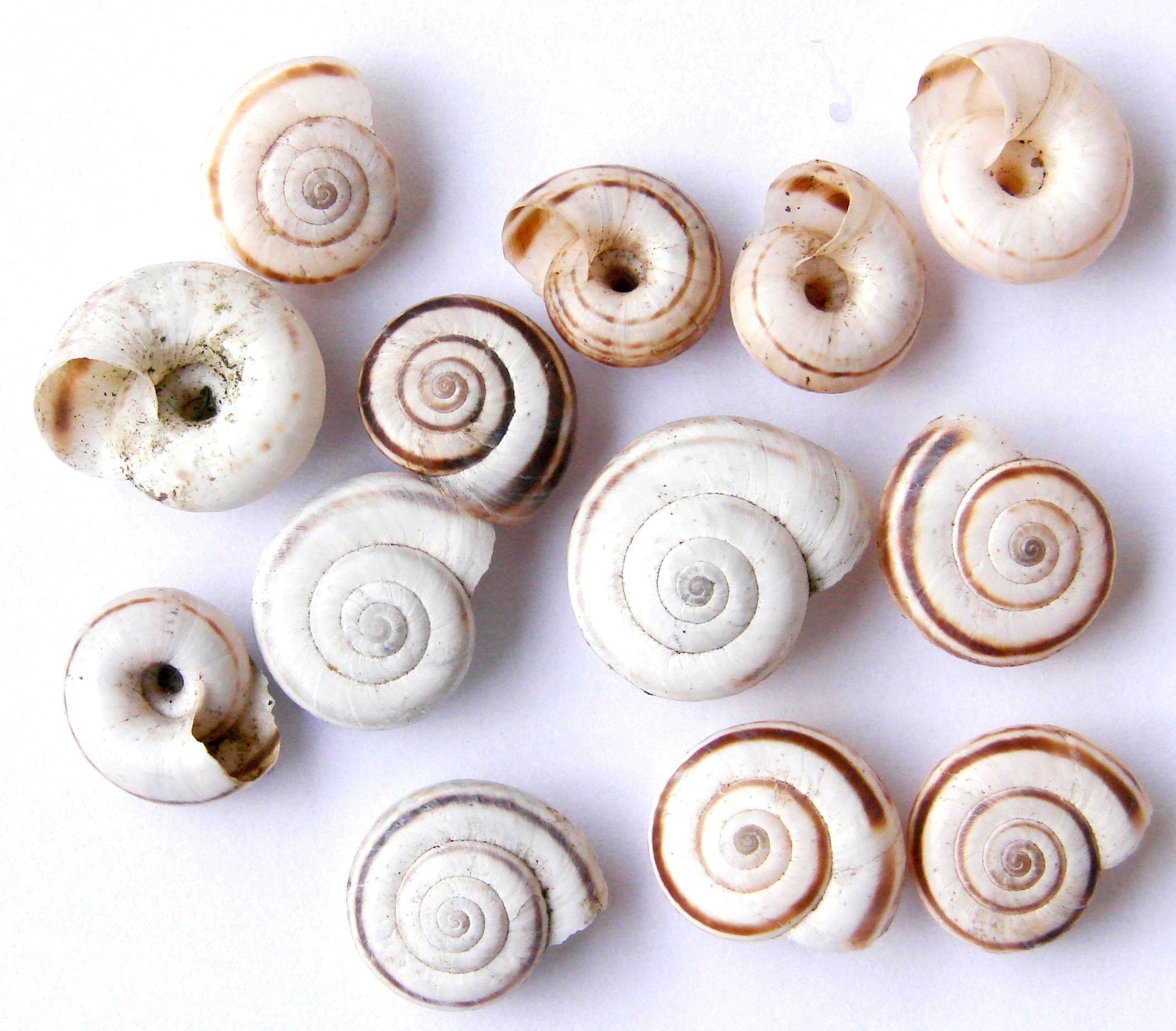Xerolenta obvia
|
Xerolenta obvia. (Photo: © J.M. Hernandez Otero, www.biolib.cz) |
|
Xerolenta obvia. (Photo: © Aung, Wikipedia) |
Family
Hygromiidae
Species
Xerolenta obvia (Menke, 1828)
Common name
Heath snail
Description
This heath snail will attain a maximum heightHeight:
The height of the shell is a measure of the distance between the apex and the most basal part of the shell OR the measurement taken from the apex of the shell to the base, when measured parallel to the axis of the shell.
of 16 mm and a diameter of 22 mm, with 5-6 whorlsWhorls:
Pleural of whorl. A whorl is a complete spiral turn/growth of the shell of a mollusc. The whorls are counted from the apex outwards.
. This opaqueOpaque:
Not having the ability to see through an object. (Not transparent or translucent)
shell is very flattened for a helicid-shaped shellShell:
A hard, inflexible, calcareous or chitinous structure that vary in size and may either completely encasing the animal, covering some part of it or be internal.
. The body whorlBody whorl:
The large, final coil (most recently formed) of a mollusc shell that contains the body of the snail, i.e. from the aperture to approximately one whorl back.
of this species turns downwards. The apertureAperture:
The major opening of a shell that the body of the animal may be retracted.
(mouth) is oval in shape and is very thin and brittle, often incomplete in vacant shells as it generally breaks. The background color is white with dark brown spiralSpiral:
Directional term: direction of the coils of the whorls of a shell; opposite of axial.
stripes. The most obvious and consistent stripe can be found at the periphery. Subsequent stripes may be faint, inconsistent and broken. The umbilicusUmbilicus:
A navel-like indentation or depression in the center of the shell. It may be described as open (inside of columella visible), partially closed (partly covered by base of aperture) or completely closed (not visible). The width of the umbilicus is a measure of its greatest diameter.
is open and obvious. In some species the coiling of the shellShell:
A hard, inflexible, calcareous or chitinous structure that vary in size and may either completely encasing the animal, covering some part of it or be internal.
when observed through the umbilicusUmbilicus:
A navel-like indentation or depression in the center of the shell. It may be described as open (inside of columella visible), partially closed (partly covered by base of aperture) or completely closed (not visible). The width of the umbilicus is a measure of its greatest diameter.
may appear haphazard.
Native range
Southeastern Europe
Distribution
North America:
- U.S.: Michigan
Europe: England, Ireland, Germany, Bulgaria, Italy, Turkey
Ecology
This species is known to feed on fodder crops (e.g., alfalfa, clover, lupine, sanfion, seradella) in southern Germany. It is also a pest in Italy and Bulgaria where it is often intercepted in shipments of fruits and vegetables to other European countries. Xerolenta obvia is a vector of fungal pathogens (e.g., Alternaria sp. Fusarium sp., Phytophthora sp.). It also vectors the sheep and goat parasites, Protostrongylus rufescens, Davainea proglottina and Dicrocoelium dendriticum.
Synonyms
-
Helicella obvia (Menke, 1828)
References
Kerney et al. 1979Kerney et al. 1979:
Kerney, M.P., R.A.D. Cameron and G. Riley. 1979. A field guide to the land snails of Britain and North-west Europe. Collins, London. pp. 288.; Robinson and Slapcinsky 2005Robinson and Slapcinsky 2005:
Robinson, D.G. and J. Slapcinsky. 2005. Recent introductions of alien land snails into North America. American Malacological Bulletin 20: 89-93.



